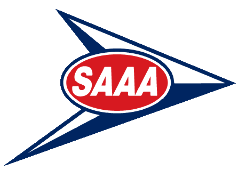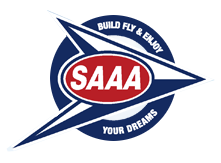SAAA Maintenance Techniques Course
Aircraft Maintenance Technician (AMT)
AMT3 Advanced Endorsements
Course Reference: MTC-AMT3 Advanced Endorsements
Applicability:
Experimental Aircraft Non-Builder / LSA Owner
Scope:
Advanced Common Core Subjects and Airframe Core Subjects
Outcome:
AMT3 Advanced Endorsements that extend an AMT 3 Advanced Certificate holder’s permissions beyond those areas of maintenance covered under the Advanced Common Core Subjects and Airframe Core Subjects. Recognition of Prior Learning (RPL) applies in respect of those topics already acquired under the AMT3 Certificate and AMT3 Endorsements, and thus the qualifications have the same effect as an AMT4 Certificate.
Limitations:
The holder may only exercise the conferred permissions in respect of AMT3 Advanced Endorsements acquired, if they have previously acquired an AMT3 Certificate and the necessary AMT3 Optional Endorsements to conduct and certify annual condition inspections, and an AMT3 Advanced Certificate. They do not need to own the aircraft to exercise the conferred permissions.
The holder may exercise the conferred permissions provided that they:
-
- – consider themselves to be competent to do so i.e. they meet the General Competency Rule (refer below), and
- – are a financial Member of the SAAA
Remarks:
Optional Advanced Endorsements may be progressively acquired to extend the AMT3 Advanced Certificate as the holder of an AM3 Certificate and AMT3 Advanced Certificate elects to do so.
A number of Advanced Endorsements are available amongst the following:
-
- 2. Airframe Core Subjects
- – MTC 2.1 – Auxilliary Core Subjects
- 2. Airframe Core Subjects
-
- 3. Airframe Specific Group Subjects
- – MTC 3.1 – Wooden Structures
- – MTC 3.2 – Fabric and Doping
- – MTC 3.3 – Power Fluid Systems
- – MTC 3.4 – Aeroplane Structures and Systems
- – MTC 3.5 – Helicopter Aerodynamics, Structures and Controls
- – MTC 3.7 – Structural Composites
- – MTC 3.9 – Pressurisation
- 3. Airframe Specific Group Subjects
-
- 5. Engine Core Subjects
- – MTC 5.1 – Piston Engine Theory and Construction
- – MTC 5.2 – Piston Engine Systems
- – MTC 5.3 – Propellers
- – MTC 5.4 – Gas Turbine Engine Theory and Construction
- – MTC 5.5 – Gas Turbine Engine Systems
- 5. Engine Core Subjects
-
- 6. Engine Specific Group Subjects
- – MTC 6.1 – Aeroplane Piston Engine Installation, Operation and Maintenance
- – MTC 6.2 – Helicopter Piston Engine Installation, Operation and Maintenance
- – MTC 6.3 – Supercharging Systems
- 6. Engine Specific Group Subjects
General Competency Rule for AMT Certificate Holders:
The general competency rule is a cornerstone of achieving safe aircraft operations – in this context, through the conduct of correct and accurate aircraft inspection and maintenance activities. Before commencing any activity permitted by an AMT certificate or endorsement, a person must ask themselves ‘Am I capable of conducting this activity competently?’
This is the equivalent of the CASR Pt 61.385 general competency rule as it applies to pilots, or similar to the medical ‘fitness to fly’ question.
It means that an AMT holder needs to be sure they are competent to inspect and maintain IAW their AMT certificates and endorsements.
The general competency rule in respect of aircraft inspection and maintenance activities covers but is not limited to:
-
- – maintaining aircraft records, certification and use of data
- – use of tools and the conduct of basic practices and procedures required to conduct aircraft maintenance and aircraft periodic or any other inspection
The general competency rule has been included for two reasons. The first is to ensure that all persons holding AMT certificates consider whether they are competent to exercise the conferred privileges. This is about good practice.
The second relates to the anticipated inclusion of a general competency rule in the for-shadowed CASR Pt 43 legislation.
AMT Certificate Holders should also consider how familiar they are with a particular inspection and maintenance activity if they have not conducted that activity for some time.

